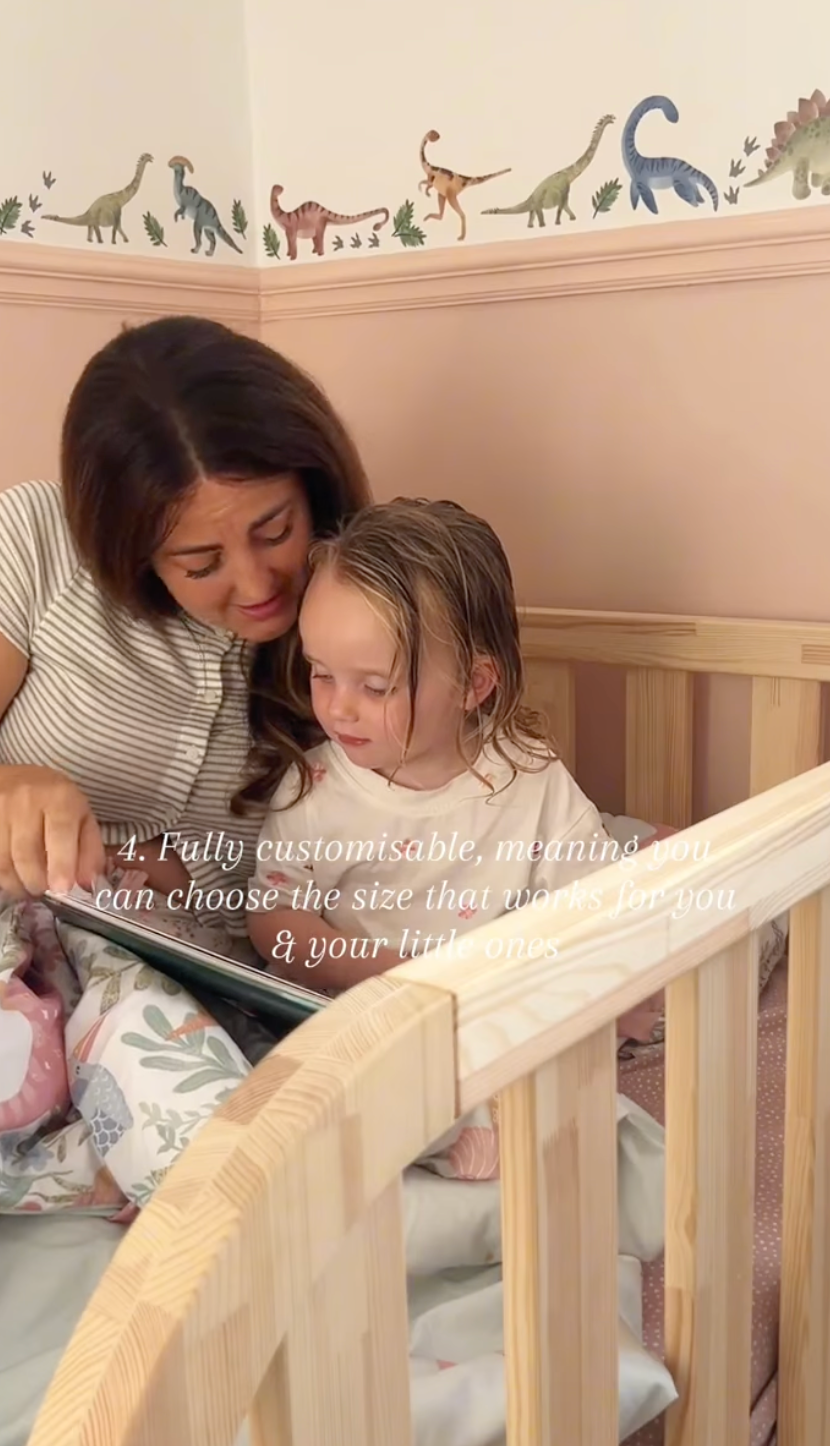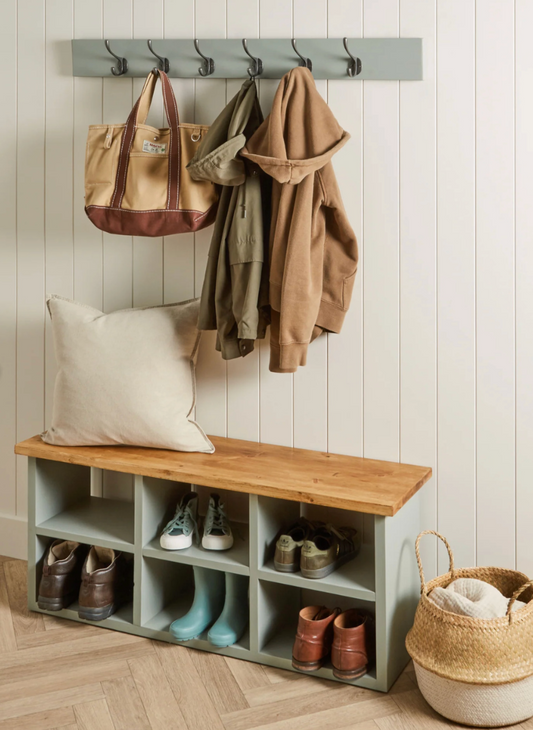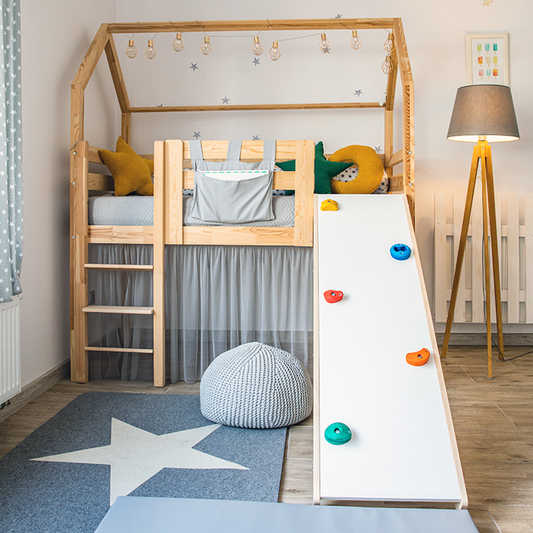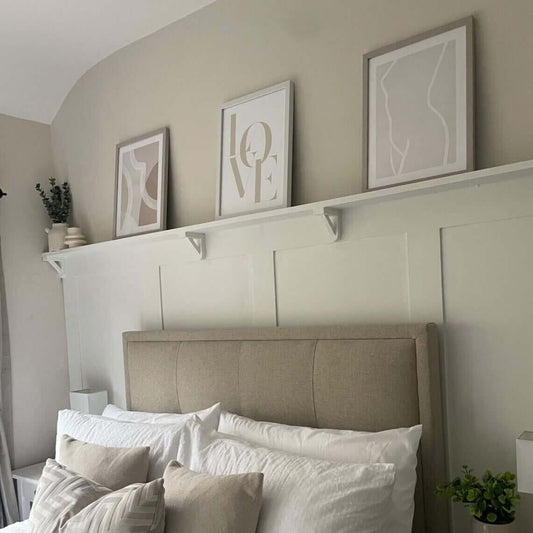
Plastic Wall Panels: The Family-Friendly Guide
Key Takeaways
- Plastic wall panels are durable and water-resistant, making them suitable for busy family environments.
- They are made from materials like PVC, acrylic, or composites.
- These panels are designed for easy installation and require low maintenance.
- Plastic wall panels help protect walls from spills, splashes, and everyday wear.
Table of Contents
- What Are Plastic Wall Panels & Why Families Choose Them
- Types of Plastic Wall Panels: A Family-Friendly Rundown
- Benefits of Plastic Wall Panels: Why Real-Life Homes Love Them
- How to Choose the Right Plastic Wall Panel for Your Family Space
- Installation Guide: Making Wall Panels Work for Real Homes
- Maintenance & Cleaning: Keeping it Fresh for Years
- Real-Life Uses: Where Plastic Wall Panels Shine in Family Homes
- Comparison: Plastic Wall Panels vs. Other Materials
- Problem Solving: Common Issues with Plastic Wall Panels
- Making the Right Choice for Your Family Home
- Looking Ahead: Plastic Wall Panels in Modern Family Homes
What Are Plastic Wall Panels & Why Families Choose Them
Plastic wall panels are a practical solution for busy family homes, offering a blend of durability, water resistance, and easy maintenance. If you're considering a home upgrade, wall panelling kits make it simple to achieve a professional look with minimal effort.
Families often choose these panels for high-traffic areas where spills and splashes are common. For a seamless installation experience, it's helpful to have the right wall panelling installation tools on hand from the start.
Before fitting panels, it's important to prepare your surfaces properly. You can find everything you need for this step in wall prep collections designed specifically for panelling projects.
Types of Plastic Wall Panels: A Family-Friendly Rundown

Benefits of Plastic Wall Panels: Why Real-Life Homes Love Them
Water and moisture resistance transforms daily routines. Splashes from sink taps, steam from hot baths, even the occasional juice box explosion, all wiped away in seconds. PVC naturally resists mould and mildew growth, crucial for British homes where dampness can be an ongoing battle. Unlike painted walls that gradually absorb moisture and develop stains, plastic wall panels maintain their appearance year after year.
Durability for busy family life means panels withstand impacts that would dent plasterboard or chip paint. They're scratch-resistant against furniture moves, toy impacts, and the general wear that comes with children exploring their world. Many panels meet Recognised Safety Standards for fire resistance, adding peace of mind for family spaces.
Low maintenance cleaning couldn't be simpler: a soft cloth with mild soap handles daily cleaning in under three minutes per wall. No special chemicals, no scrubbing, no repainting every few years. This practical approach aligns perfectly with Roomix's philosophy of creating solutions that work with family life, not against it.
How to Choose the Right Plastic Wall Panel for Your Family Space
Surface finish matters for child safety and practicality. Matte finishes hide fingerprints and smudges better, perfect for corridors and playrooms where little hands touch everything. Gloss finishes wipe cleaner but show marks more readily, making them ideal for splashbacks where cleaning happens frequently anyway.
Sizing requires simple planning: measure wall height and width, then add 5% extra for cuts and adjustments. Standard panel lengths of 2.4m and 3m suit most British homes, while custom cutting ensures perfect fits around windows and fixtures. Consider how panels will work with existing furniture, neutral tones complement Roomix's natural wooden pieces beautifully, while bold colours can create striking feature walls.
Practical application depends on room function. Bathrooms need maximum water resistance with sealed edges. Kitchens benefit from easy-clean surfaces behind cookers and sinks. Playrooms can handle brighter colours and patterns that would overwhelm adult spaces. The key is matching panel properties to real-life use, not just aesthetic preferences.
For more inspiration on standout wall features, explore this feature wall inspiration guide.
Installation Guide: Making Wall Panels Work for Real Homes

Surface Preparation
Start with clean, dry walls on a day with low humidity. Fill any holes with standard filler, sand smooth when dry, and wipe down with a barely damp cloth. The surface doesn't need to be perfect, panels hide minor imperfections, but it must be clean and stable.
Cutting and Sizing
Mark panels with pencil and cut slowly with a fine-tooth saw. Wear safety gloves, the edges can be sharp. Most panels cut cleanly with a standard handsaw, though power tools speed up larger jobs.
Allow for a 2mm gap at corners and edges. This prevents buckling as panels expand slightly with temperature changes. Measure twice, cut once, replacement panels mean waiting for new orders.
Fixing Panels Securely
Apply adhesive in pea-sized beads every 15cm along the back of each panel. Press firmly for 30 seconds, then secure with panel pins every 30cm, 3cm from edges to prevent splitting. For interlocking systems, simply click panels together. Each piece takes roughly 3 minutes to position and fix.
Work from one corner across, checking alignment as you go. If panels feel loose, add extra fixings at the midpoint. The key is consistent pressure and patience, rushing leads to gaps.
Final Installation Checks
Press gently along each seam to ensure full contact. Wipe away any adhesive squeeze-out immediately, it's much harder to remove once set. Check for gaps wider than 3mm and add low-profile trim where needed.
Step back and inspect the whole wall. Any wobbly sections need additional fixings. A properly installed panel wall should feel solid and look seamless.
Maintenance & Cleaning: Keeping it Fresh for Years
The beauty of plastic wall panels lies in their virtually maintenance-free nature. A simple wipe-down keeps them looking new, making them perfect for busy family homes where time is precious.
Daily and Weekly Cleaning
Wipe spills immediately with a soft, damp cloth, no special products needed. For weekly maintenance, use a non-abrasive spray and microfibre cloth. The entire process takes under 2 minutes per wall. Unlike painted surfaces, you won't see scuff marks or need touch-ups.
Monthly, inspect joints for any separation and apply a thin bead of clear sealant if needed. This prevents moisture getting behind panels and maintains that crisp, finished look.
Troubleshooting Common Problems
Scratches fill easily with colour-matched wax compound. Apply a pea-sized amount, smooth with a soft spatula, and let dry for 5 minutes. For stubborn stains, use a gentle plastic panel cleaner, always test on a hidden area first.
If panels show discolouration, it's usually surface-level. A family-safe restorer brings back the original finish without harsh chemicals that could affect air quality around children.
Real-Life Uses: Where Plastic Wall Panels Shine in Family Homes
Smart families use plastic wall panels strategically, not everywhere, but in the spots where life gets messy. These practical applications solve real problems without compromising on style.
Nurseries and Playrooms
Lower wall protection from crawling babies, marker experiments, and toy impacts makes panels invaluable in children's spaces. Choose matte finishes to reduce fingerprint visibility and softer colours that won't overstimulate young minds.
Many families pair panels with Roomix's custom wooden shelving, the panels handle the daily wear while beautiful, bespoke wood pieces add warmth and character. This combination delivers both function and style without compromise.
For a nursery-specific solution, see the nursery panelling kit designed for playful, durable protection.
Utility Rooms and Kitchen Zones
Behind washing machines, panels stop splash damage and make cleaning simple. In kitchens, they create instant splashbacks that wipe clean in seconds, perfect for the chaos of family meal prep.
Entryways benefit enormously from panel protection. Pushchairs, muddy shoes, and daily traffic take their toll on traditional walls. Panels absorb the impact and clean up easily, keeping your home looking fresh.
For more ideas on hallway transformations, check out these wall panelling ideas for your hallway.
Real Family Success Story
The Johnson family installed panels in their utility room after water damage from a leaking washing machine. Two years later, the panels still look perfect despite daily use, while their custom Roomix storage keeps everything organised above the splash zone.
Comparison: Plastic Wall Panels vs. Other Materials

Understanding how plastic wall panels compare to alternatives helps families make informed choices. Each material has its place, but for busy family homes, the differences are significant.
| Material | Water Resistance | Maintenance | Installation Ease | Family Safety | Cost Range |
|---|---|---|---|---|---|
| PVC Panels | Excellent - fully waterproof | Wipe clean only | DIY friendly | Non-toxic, smooth edges | £15-45 per panel |
| MDF Panels | Poor - swells when wet | Paint touch-ups needed | Moderate skill required | Can release formaldehyde | £8-25 per panel |
| Wood Panels | Variable - needs treatment | Annual maintenance | Natural, FSE Approved options | Skilled installation | £40-120 per panel |
Durability in Family Settings
Plastic wall panels outperform traditional materials in high-traffic family zones. MDF swells and warps with moisture, a single bathroom steam session can cause permanent damage. Wood requires annual treatment and sanding to maintain appearance.
PVC panels maintain their finish for years without intervention. They won't rot, warp, or need repainting. For families juggling work and children, this translates to genuine time savings and lower long-term costs.
To learn more about MDF alternatives, see this guide to MDF wall panels.
Safety and Health Considerations
Modern plastic panels meet Recognised Safety Standards for indoor use. They don't splinter like wood or crumble like damaged MDF. The smooth surface prevents cuts and scrapes, important when toddlers are finding their feet.
Unlike some composite boards, quality PVC panels don't off-gas harmful chemicals once installed. They're inert materials that won't affect indoor air quality around sleeping children. For more on PVC safety, see this authoritative resource on PVC from NIOSH.
Problem Solving: Common Issues with Plastic Wall Panels
Quick Fix Guide
Scratches: Room-temperature repair wax, smooth with soft spatula
Loose panels: Additional adhesive at midpoint, 15-minute cure time
Moisture behind: Re-caulk joints, allow 12 hours drying
Fixing Installation Issues
Gaps wider than 3mm need attention. Remove the loose panel, clean the back surface, and reapply adhesive. Press firmly for 60 seconds this time. If gaps persist, the wall surface may be uneven, use thin packing strips behind the panel to level it out.
For persistent moisture problems, check for leaks in plumbing or poor ventilation. Plastic wall panels themselves won't cause damp, but they'll show you where problems exist. Fix the source, then reinstall panels over a completely dry surface.
If you're working in a bathroom, consider using bathroom-specific panels and accessories for optimal moisture resistance.
Long-term Care Solutions
Discolouration usually happens near heat sources or in direct sunlight. UV-resistant panels prevent this, but existing panels can be refreshed with specialist plastic restorers. Apply sparingly and buff to restore the original sheen.
Panel edges separating at joints indicate movement in the building structure. This is rare but fixable, remove affected panels, check wall stability, and reinstall with flexible sealant at joints to accommodate minor movement.
For more information on wall panel types and history, see this comprehensive overview of wall panels.
Making the Right Choice for Your Family Home
Plastic wall panels work best when chosen strategically. They're not meant for every room, but in the right locations, they solve real problems while looking good. The key is matching panel type to room function.
Room-by-Room Guidance
Bathrooms need fully waterproof PVC with antimicrobial surface treatment. Playrooms benefit from impact-resistant panels in cheerful colours that hide fingerprints. Utility rooms require heavy-duty panels that can handle daily splashing and bumps.
Bedrooms rarely need panels unless you're dealing with rising damp or want easy-clean surfaces behind beds. Kitchens benefit from panels as splashbacks, but full-wall coverage can feel clinical. Strategic placement works better than wholesale room coverage.
For a stylish bedroom upgrade, take a look at the shiplap bedroom panelling kit for inspiration.
Balancing Function and Style
The most successful family installations combine panels with quality wooden elements. Roomix's custom storage solutions pair beautifully with practical panel backgrounds, you get the durability you need with the warmth wood provides.
Consider texture and finish carefully. Smooth, glossy panels show every mark but wipe clean instantly. Textured surfaces hide daily wear better but can trap dirt in grooves. For busy family homes, a subtle texture usually works best.
The Family-First Approach
Choose panels for protection and practicality, not just aesthetics. The best family homes use them where life gets messy, paired with beautiful, lasting materials like FSE Approved wood where character matters most.
Looking Ahead: Plastic Wall Panels in Modern Family Homes

Plastic wall panels continue evolving with better textures, improved environmental credentials, and smarter installation systems. As families look for practical, attractive solutions that stand up to daily life, these panels are set to remain a staple in modern homes. The key is choosing quality panels, installed with care, and pairing them with natural materials for a space that feels both functional and welcoming.
Frequently Asked Questions
What materials are plastic wall panels made from, and how do they benefit family homes?
Plastic wall panels are typically made from PVC, acrylic, or composite materials. These panels offer water resistance, durability, and easy cleaning, making them ideal for busy family homes where spills, splashes, and everyday wear are common.
How do plastic wall panels compare to traditional wall materials in terms of durability and maintenance?
Plastic wall panels are more durable and resistant to impacts, scratches, and moisture than traditional plaster or painted walls. They require minimal maintenance, usually just a quick wipe with mild soap, helping them stay fresh and stain-free even in high-traffic family areas.
What factors should I consider when choosing the right plastic wall panel finish for different family spaces?
Consider the level of moisture exposure, traffic, and style preferences when choosing a finish. For wet areas like kitchens or bathrooms, opt for smooth, water-resistant finishes, while textured or patterned panels can add character to playrooms or hallways without sacrificing practicality.
What are the recommended steps and tools for installing plastic wall panels effectively in a busy family home?
Start by properly preparing and cleaning your wall surface to ensure good adhesion. Use appropriate wall panelling installation tools like a level, adhesive, and a saw for cutting panels to size. Taking time with accurate measurements and secure fixing will ensure a neat, durable finish that stands up to family life.


